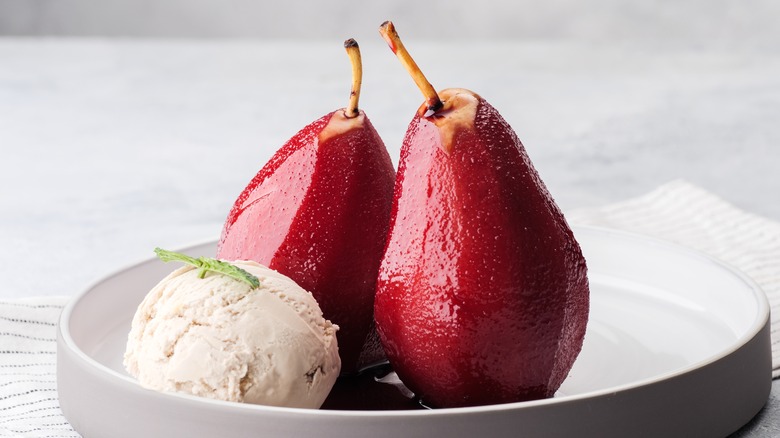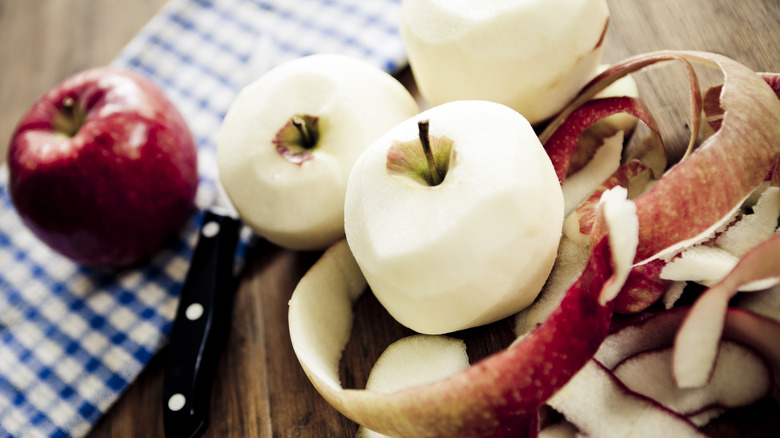The Extra Step Of Peeling Guarantees Beautiful Sous Vide Red Wine Fruit Every Time
Sous vide isn't just a method for tender steaks and delicate seafood. The low and slow cooking process that involves sealing food in a bag and cooking it in a water bath also has its applications for desserts. That said, while you might be familiar with poaching fruit, why not switch up your technique with a sous vide-style preparation? Just bear in mind that, despite a change of methodology, some rules for prepping fruit must stay the same — yes, that means fruit still needs to be peeled for the most ravishing results.
We understand that the sous vide process might be lengthy. However, skipping steps like peeling isn't wise. By not taking the time to rid fruit of its skins, aesthetics can be massively compromised. Peeling reveals both a lightly colored and ultra porous flesh that's better suited for absorbing the color (and flavors!) of the red wine. Additionally, peeling improves texture as the fruit's flesh is softer and less bitter than the skins. It might also save you the hassle of having fruits like peaches peel as they soak.
If you're sold on the idea of peeling fruit, there is one issue to contend with, and that's oxidization. As certain fruits are exposed to oxygen, their flesh starts to brown. To prevent this from happening, either prep the fruit closer to the time it'll undergo the sous vide, or spritz some citrus juice over it.
The fruits you need to sous vide in red wine, and how to do it
The fruits best suited for sous vide are essentially the same as those meant for poaching. So steer clear of berries, bananas, and melons as they'll soften to the point of disintegration as they sit in warm liquid. Instead, work with firmer fruit, preferably options that are barely ripe. Pears may be a classic, but there's no reason why you can't work with apples, apricots, peaches, nectarines, plums, or even cherries — which you can actually refrain from peeling due to the sheer tediousness.
Similar to poaching, the sous vide process starts with adding dry red wine (white or rosé won't provide the same vibrant color) to a sauce pot along with warm spices, citrus curls, sugar, and a vanilla bean. Then, the mixture is reduced slightly to lower the alcohol content and soften the wine's acidity. After cooling, the mixture is added to a sous vide bag with the peeled fruit and submerged into a water bath until it's ready to be strained and served.
The slightly spiced fruits make an incredible match when paired with a scoop of fior di latte gelato, a dollop of whipped mascarpone, or a simple vanilla custard. For a savory spin, fruits can be served with Gorgonzola and walnuts as part of a cheese course. Almost too aesthetic to enjoy, the camera definitely eats first when it comes to peeled fruit cooked in a red wine sous vide!

